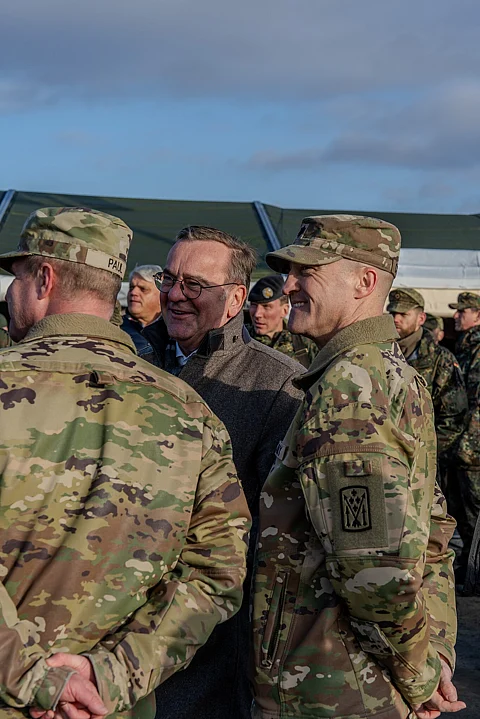

Germany will need to recruit an additional 50,000 to 60,000 active-duty soldiers to fulfill NATO’s strengthened defense requirements amid rising threats from Russia, Defense Minister Boris Pistorius said Thursday.
Speaking ahead of a NATO meeting in Brussels, Pistorius emphasized that the alliance must explicitly label Russia as its "greatest threat" in its upcoming summit declaration.
"We are assuming—though this is just a rough estimate—that we will need around 50,000 to 60,000 more soldiers in the standing forces than we have today," Pistorius said. "At the same time, the question arises: Will voluntary military service be sufficient in the coming years?"
NATO has been bolstering its eastern flank since Russia’s full-scale invasion of Ukraine in 2022. Secretary-General Mark Rutte stressed Wednesday that the alliance must expand its military capabilities, prioritizing air and missile defense, long-range weapons, logistics, and large-scale land forces.
Pistorius acknowledged that Germany’s current voluntary recruitment system may not be enough to meet NATO’s demands. While conscription could eventually become necessary, he noted that the military lacks the infrastructure—such as barracks and training capacity—to support it immediately.
"Conscription is of no use at all now because we have neither the barracks nor the training capacity," he said. "These capacities must grow first. Until then, we rely on voluntary participation."
Germany suspended mandatory conscription for men in 2011. Pistorius has proposed a revised model where all 18-year-olds receive a questionnaire about their fitness and interest in military service. While men would be required to respond, participation would remain optional for women. Selected candidates could then enlist for an initial six-month term, with options to extend.
Despite increased recruitment efforts, the Bundeswehr’s active-duty personnel slightly declined in 2024 to 181,150—well below the target of 203,000. Military planners now estimate a total force of 460,000 (including active troops and reservists) may be needed to meet NATO obligations.
The debate over conscription has resurfaced, with Germany’s new Parliamentary Commissioner for the Armed Forces, Henning Otte (CDU), telling Tagesspiegel that NATO’s heightened demands may require partially compulsory service. He urged the Defense Ministry to propose a feasible plan for mandatory enlistment.
Germany’s post-reunification treaty commitments previously capped its military at 370,000 personnel, but legal experts suggest this applies only to active-duty forces, leaving room for expansion.
As NATO prepares for long-term deterrence against Russia, Germany faces mounting pressure to strengthen its armed forces—whether through voluntary measures or a return to conscription.